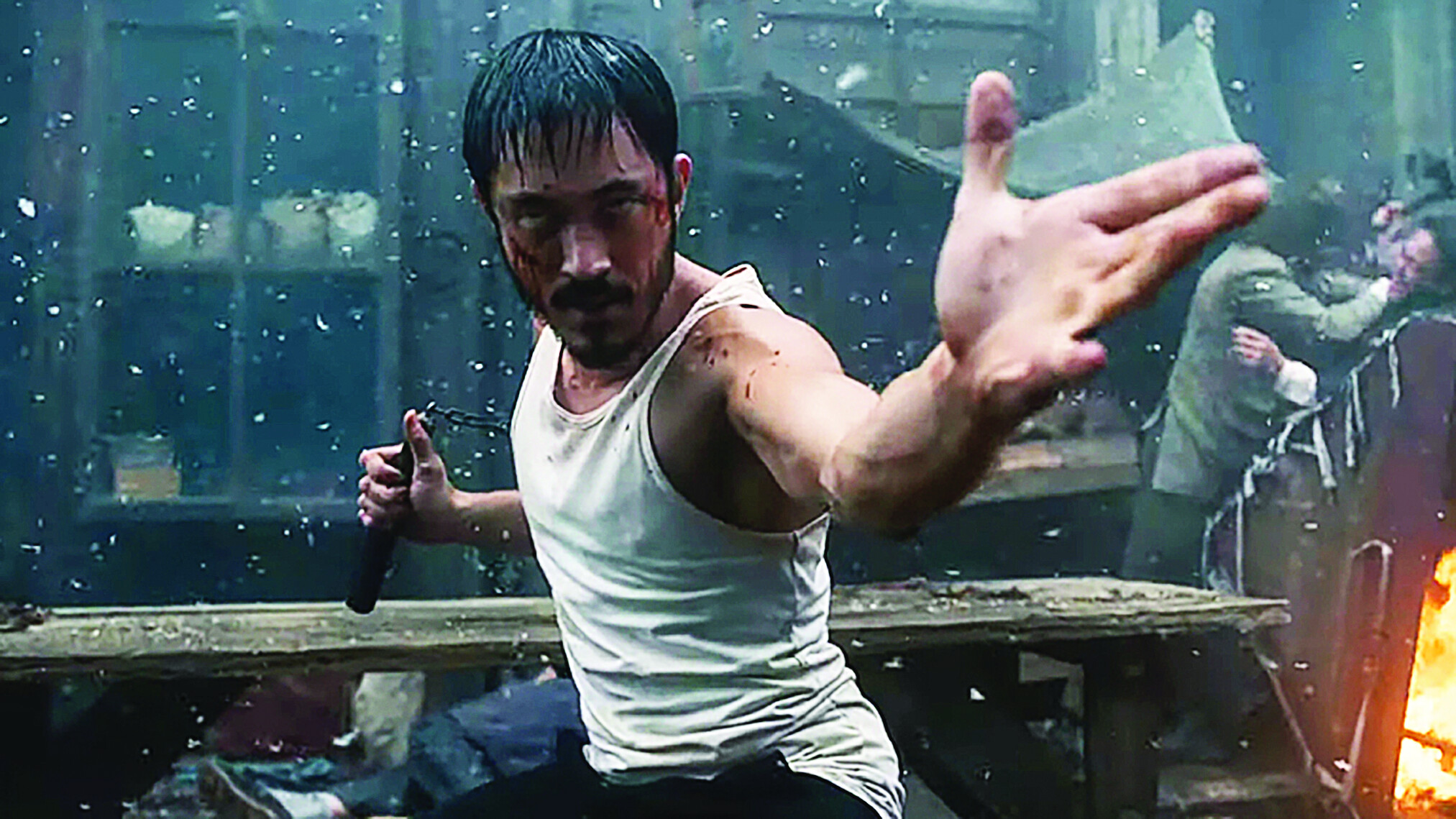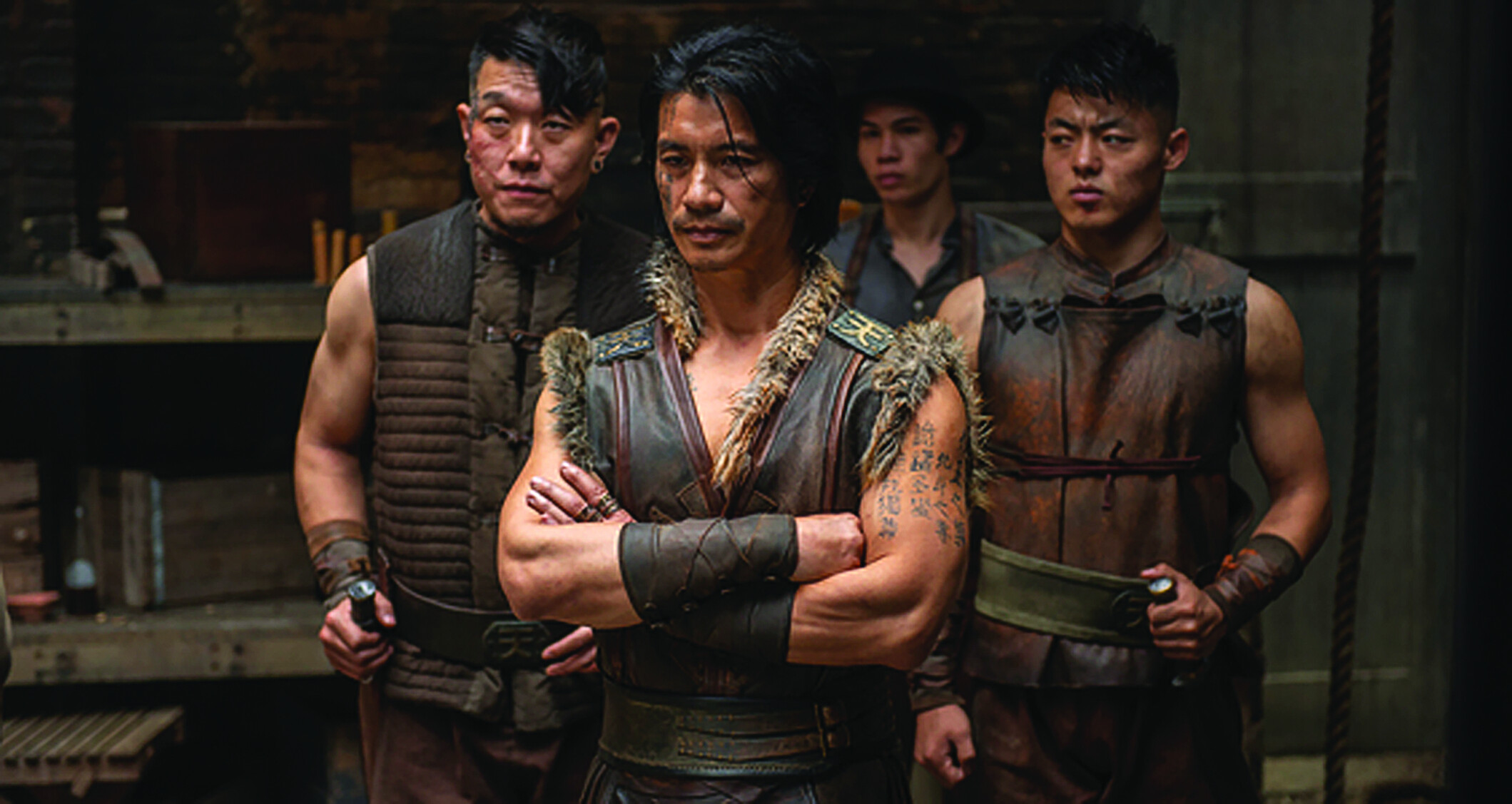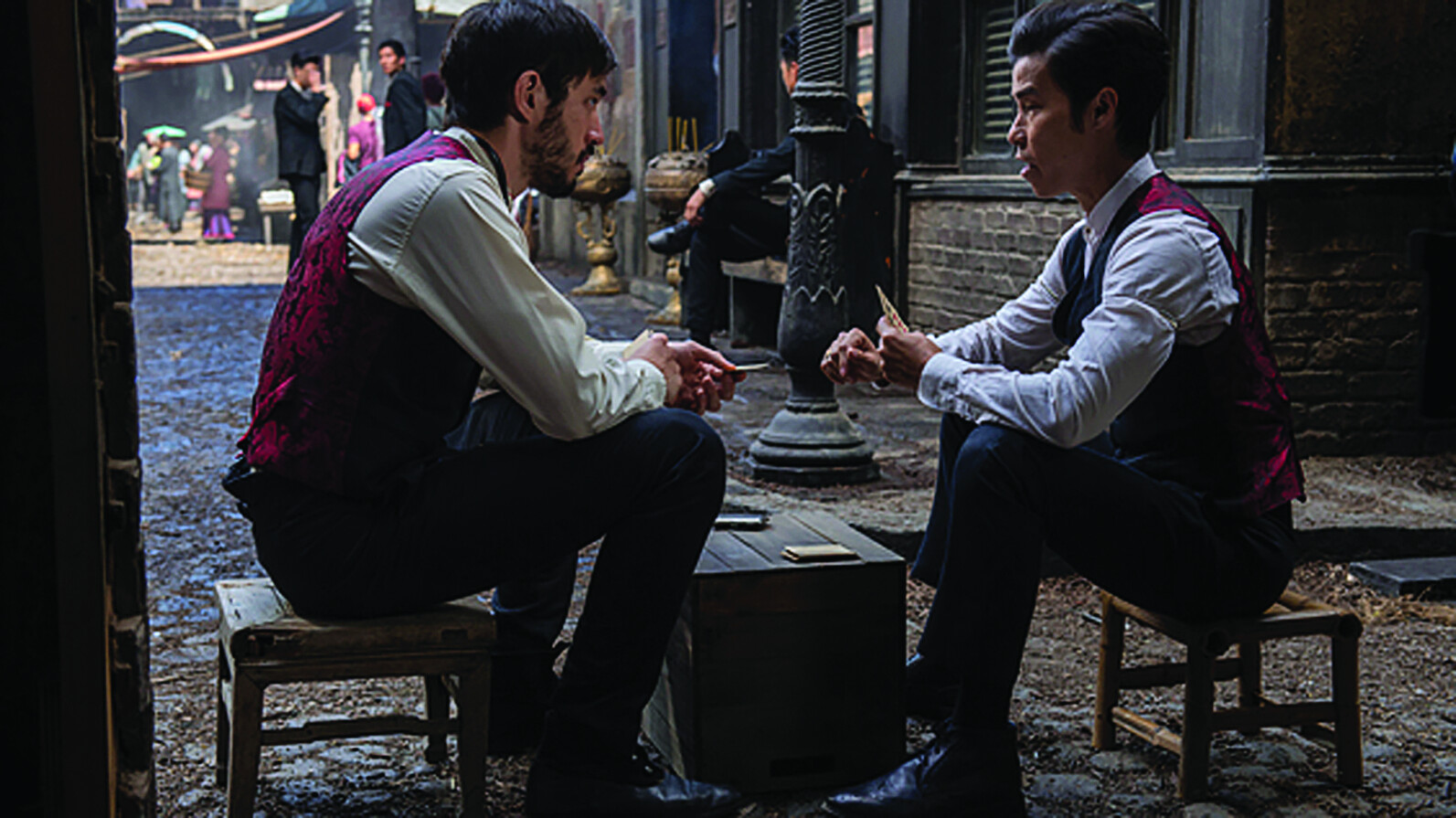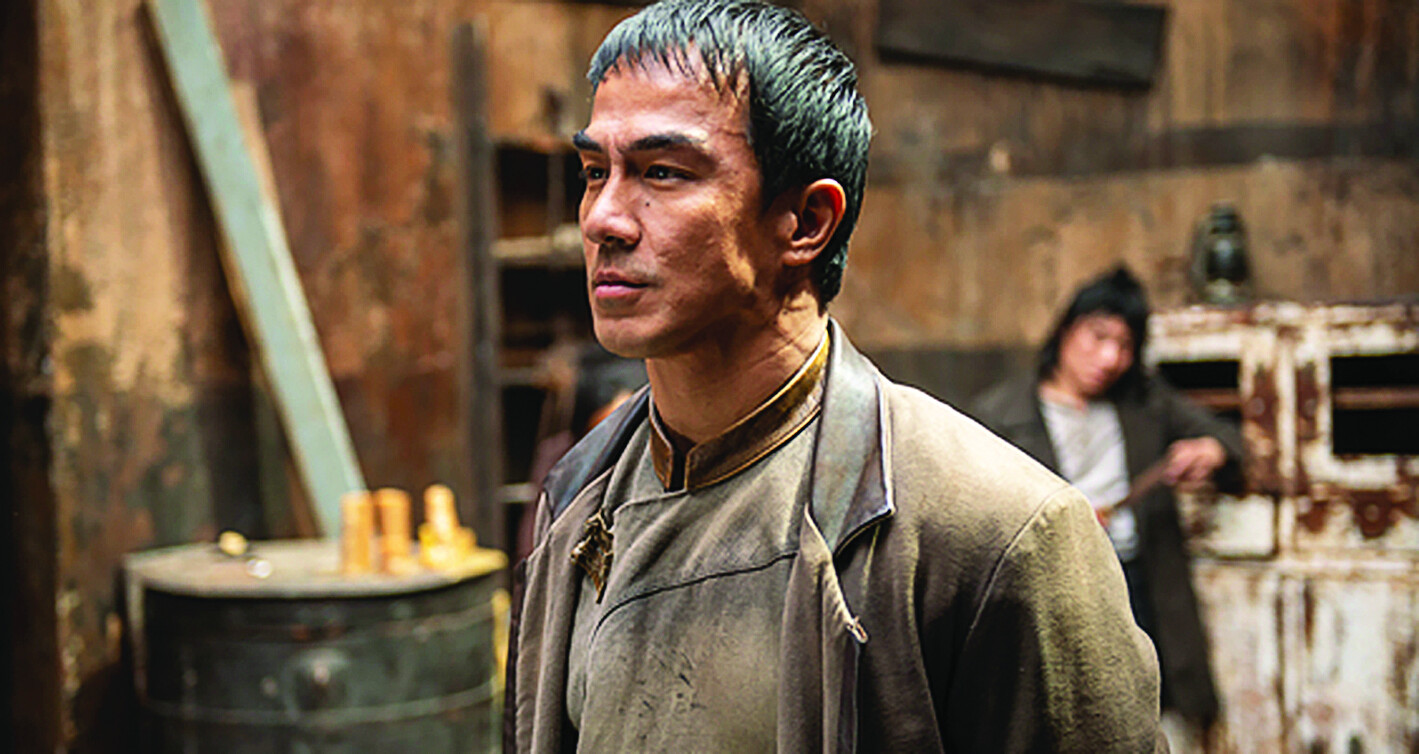
HOW BRUCE LEE CONQUERED THE RAT
By Dr. Craig D. Reid
According to Chinese astrology, 2020 was the Year of the Rat - which explains the bad luck we all had! It turns out that rats are not compatible with goats and can be fought by goats. Consider this: when Bruce Lee charmed the world with "Fist of Fury" in 1972, he also legitimised kung fu cinema - a sense of identity for Asian-Americans and Chinese people. Lee did more to spread martial arts during his life and after his death than anyone else in history. In my book, making him the WINNER, the greatest of all time in the world of martial arts, and through several projects he inspired, he succeeded in countering the 2020 rat. In particular, he did this through the films "Enter the Fat Dragon", "Paper Tigers", "Be Water" and the great subject matter covered here: the poignant second season of "Warrior".
Season 2 shocked viewers' psyches with snippets of forgotten Chinese-American history that rival the internment of Japanese-Americans during World War II and the lynching of blacks in the Deep South. Sobering scenes in the last two episodes of the season culminated in a climax that had a strong fight to offer - scenes full of proud symbolism. It was as compelling as it was moving.
One such scene is a reenactment of how whites and Mexicans lynched Chinese en masse in Los Angeles in 1871 - when killing a Chinese citizen resulted in nothing more serious than a US$12 fine. Fighting an angry mob of Irish workers instigated by white government officials, two groups banded together to defend their people in the recreated Chinatown of Warrior.
In the Cinemax series, Andrew Koji, who plays Ah Sahm, reflects that as humans we all seek peace and happiness. Sadly, the closest the character comes to this is in episode 5 in season 1 when he tries a simple life and his heart yearns for a family. In terms of the struggles that erupt when that simple life ends, Koji said, "He's no longer fighting for ego; he's fighting for a greater cause. He finds peace in using his skills for the greater good, and changes from a selfish fighter to a selfless warrior."

New approach
In a 2005 interview with Bruce Lee's sister Phoebe, she told me that as children in Hong Kong, she and Bruce were not allowed to spend too much time outside because of the aftermath of World War II. But when Bruce went out, he borrowed kung fu comics about Shaolin heroes fighting the evil Manchu who had subjugated China. She said her brother also loved drawing the kung fu deity Guan Gong, with whom he is often depicted - a red face and his signature halberd-like weapon, the Guan Dao.
"Warrior", adapted from Lee's 1968 storyline titled "Ah Sahm", may have been inspired by these comics. It is set in the American West in 1870 and Sahm was sent to California to rally the troops to help the Chinese overthrow the Manchus. While Warrior seems to have abandoned this story for season two, he has hit upon an approach that is quite simply amazing.
First, a little relevant history: The Romance of the Three Kingdoms is a tale of brotherhood involving Guan Gong, Zhang Fei and the Shu Emperor Liu Bei. Set in the era of the Three Kingdoms (220-280), the novel chronicles the battle of these kingdoms - Wei, Wu and the benefactors for supremacy. Although Wu Emperor Sun Quan allied with the Shu against the Wei, the Wu and Wei had a secret pact. Back to "Warrior": Season 2 is set in San Francisco in 1878. It chronicles the battle of the Hop Wei Tong, Long Zii Tong and Fung Hai Tong for control of Chinatown. Although the Long Zii secret society, led by Sahm's sister Mai Ling and supported by Li Yong (Joe Taslim), has an uneasy alliance with Hop Wei against Fung Hai's ruthless leader Zing (Dustin Nguyen), the Long Zii and Fung Hai have a secret pact.
The difference in "Warrior" is that the Chinese have to fight back against the Irish, which means Sahm has to duel their leader Dylan Leary - a fight fans have been anticipating since 2019. Sahm uses his signature weapon, the nunchaku. I will not tell you how it will play out. I will tell you, however, that the day after is even more exciting - and perhaps reflects Lee's love of drawing Guan Gong with his Guan Dao.
Amidst the escalation in gang warfare, exacerbated by the Chinese Exclusion Act and cruel racial tensions, Season 2 also has a murder mystery, more concrete characters, sword-wielders, misguided police officers, and unexpected relationships where good comes - evil and evil become good.
All of this leads to more gritty storytelling that is meant to highlight these nuances. The fights are shot differently, with bigger angles, longer takes, new weapons, chaotic crowds and different martial arts, making the season more memorable.
There is also a new character worth mentioning: Nellie Davenport. She is based on a real Presbyterian missionary who provided a hiding place for Chinese immigrants. The missionary's name was Donaldina Cameron, also known as the "Angry Angel of Chinatown". Throughout her life, she helped free more than 2,000 immigrant girls and women from bondage and forced prostitution.

Top-Tong-Fighters
In Warrior, each gang has a superior fighter who possesses extraordinary skills - they are Sahm (Koji), Yong (Taslim) and Zing (Nguyen) - and all embody different fighting styles and are shown with different camera choreography created by Brett Chan. However, the actors' storied lives and martial arts skills also prepared them to face the emotional challenge of treading the hallowed ground of what "Warrior" represents to Bruce Lee's family and fans. Nguyen, who grew up in war-torn Vietnam, lists 1973's "Blood Brothers" as his first kung fu film. Before moving to America, he watched a Bruce Lee film and has "grown with it ever since". "I went through high school wrestling to taekwondo and when I moved to LA to become a director, my goal was to learn Jeet Kune Do from guru Danny Inosanto," Nguyen said.
"It was a no-brainer to get involved. About the spirit? I never thought about it, but when Shannon [Lee] came to the set, it was a reminder. Martial arts is a big part of my life, an anchor as I get older and a foundation for me as a person and a filmmaker."

Taslim was born in Indonesia and was fortunate to have a father who took him to see American Shaolin several times and then enrolled him in taekwondo, wushu and boxing classes. Taslim later discovered that his calling was judo, and he became a star judoka in Indonesia from 1997 to 2009.
"Bruce is an icon to me and it is invaluable to be part of a show from his vision," he said. "I'm honoured to be a part of 'Warrior'. It's important to me. I come from Southern Indonesia where spirits are an important part of our culture. I fully believe in Lee's spirit and the blessing was always there and he was proud of his daughter, cast and crew."
Born and raised in small-town England, Anglo-Japanese Koji was only 10 years old when he discovered Tekken and Jackie Chan movies. If he was chosen and didn't fit into either ethnic group, he learned about racism - but didn't defeat it.
"I wanted to look after myself, so I travelled twoand-a-half hours every weekend to Shaolin Temple UK and studied with a hard-boiled San Da man, and later learned taekwondo.
I didn't know much about Bruce as an adult other than cross-cultural references. I learned how he influenced all of us. He stood for individuals to express themselves honestly in everything you do, and I felt that spirit of Lee on set. It eased the pressure of being his character."
Dr Craig D. Reid's book, The Ultimate Guide to Martial Arts Movies of the 1970s, can be found at shop.blackbeltmag.com.







